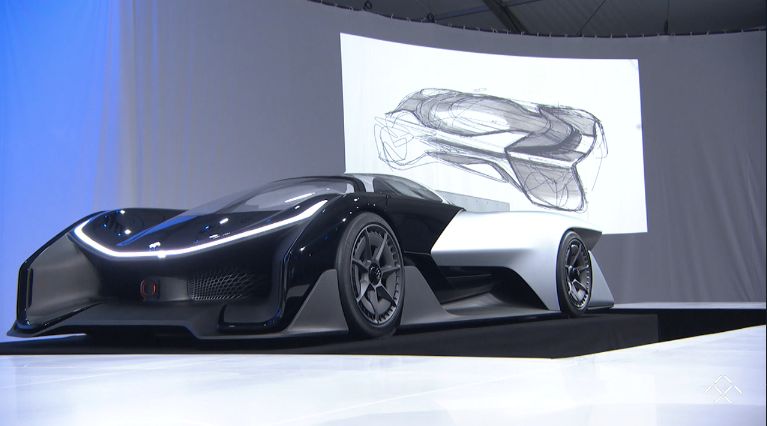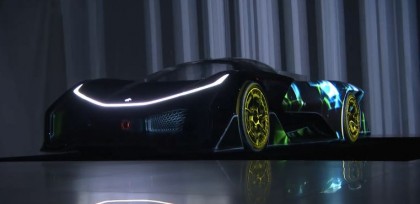This is the FFZERO1, Faraday Future's insanely fast electric car
Is this the future of electric vehicles?

After much teasing and a significant leak, we've finally seen Faraday Future's concept car in the flesh.
Dubbed the FFZERO1, details were few during its anticipated reveal at CES 2016, but the promises were big. This is an "extreme tablet on wheels," said Nick Sampson, SVP, R&D Product Development at Faraday and formerly of Tesla.
Head of Global Design Richard Kim called it a "car of concepts," meaning it embodies many ideas into one vehicle, and won't likely make it to the road as-is.

During its press conference, Faraday Future, or FF for short, focused on several key areas of the vehicle. It emphasized the interior, which is white, a color that wouldn't be possible in an internal combustion car, Kim said. There's only one seat, for the driver, and it's angled at 45-degrees to "maximize comfort and increase circulation." Oxygen and water are supplied through a helmet, though that wasn't shown during the presentation.
The car learns from the driver, picking up on preferences like seat position and adapting to the driver. The FFZERO1 - and all FF vehicles to come - will be fully connected and autonomous ready.

It's exterior features a contrast of matte and gloss finishes, much like a race car. What FF calls a UFO line runs horizontal through the vehicle, showing that it's "not of this world," Kim said. This line will be a design element of FF cars to come.
Projected FFZERO1 specs
According to a Faraday spec sheet, the FFZERO1's projected powertrain consists of four quad-core motors with over 1,000 horsepower. It can go 0-60 in under three seconds, and tops out at 200 mph-plus. Of course, these are specs on paper - we haven't seen a working model yet.
Get daily insight, inspiration and deals in your inbox
Sign up for breaking news, reviews, opinion, top tech deals, and more.
Aside from the single seat and high-performance materials, the interior of the car is full connected and features an intuitive UI that syncs up with virtual and head-up displays.

FFZERO1 owners can use their smartphone to setup the vehicle remotely. Like other vehicles, it promises to learn from its users: it will learn their preferences and can even perform live analysis of the vehicle systems, seemingly to enhance comfort.
As for the exterior, the FFZERO1 is comprised of carbon fiber and a lightweight composite material. It has a custom-built, high-performance racing suspension and advanced dynamic control and vehicle vectoring. It's designed to reduce drag and help battery cooling, and it certainly looks aerodynamic.
VPA and FF roots
Before the FFZERO1 was announced, Sampson discussed Faraday's approach to making electric vehicles.
The company employs a process called Variable Platform Architecture (VPA), which essentially means certain elements of the vehicle design are modular. Parts like batteries and motors can be added or subtracted, with the wheel case adjusting. This lets Faraday make many models at a quicker pace and for less cost. Everything from a luxury sedan to SUV to a pickup truck are possible with VPA.
The concept isn't new: modular car platforms are currently in use by Mazda - the 3, 6 and CX-5 all share the same platform but have different powertrain configurations - and the Volkswagen MQB is a modular platform available now.
Samsung said FF plans to deliver its first production vehicle "in just a few years' time."

A lot of mystery has surrounded Faraday Future ever since its inception 18 months ago, and tonight we were enlightened, to some degree, as to its roots.
Chinese firm Letv, an entertainment company referred to by many as the "Netflix of China," is a strategic partner of Faraday Future. Letv has its own electric vehicle ambitions, and though the companies are separate, the firms are working together to develop electric vehicles.
- More from CES 2016
Michelle was previously a news editor at TechRadar, leading consumer tech news and reviews. Michelle is now a Content Strategist at Facebook. A versatile, highly effective content writer and skilled editor with a keen eye for detail, Michelle is a collaborative problem solver and covered everything from smartwatches and microprocessors to VR and self-driving cars.
